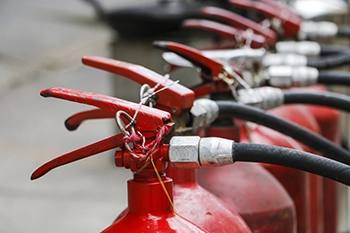Fire doors are one of the most important safety features in rental and commercial properties. They slow the spread of smoke and flames, giving occupants time to escape. For landlords, understanding fire door legislation is not optional. It is a legal duty under UK fire safety law, and inspectors often find issues with fire doors during compliance checks.
This guide explains what landlords need to know about fire door legislation in the UK. It also covers how the law applies to HMOs and rental properties and outlines the steps required to stay compliant.
The Regulatory Reform (Fire Safety) Order 2005, often called the Fire Safety Order, sets the foundation for UK fire safety law. It makes the “responsible person”, usually the landlord or property manager, directly accountable for ensuring that a building is safe from fire. Because fire doors protect escape routes and provide compartmentation, the law treats them as critical.
You can read the full Fire Safety Order on the official UK Government Legislation website.
In addition, the Building Regulations: Approved Document B outlines detailed requirements for new builds and conversions. It specifies, for example, that fire doors must be fitted on escape routes and between high-risk areas like kitchens and staircases. More guidance is available on Gov.uk.
Houses in multiple occupation (HMOs) carry higher risks because of the number of tenants and shared facilities. Local councils use HMO licensing powers under the Housing Act 2004 to enforce stricter standards. As a result, landlords must almost always install fire doors in specific parts of the building.
In most HMOs, councils require landlords to install fire doors:
When landlords fail to provide adequate fire doors, they risk licence breaches, enforcement notices, or even the loss of a licence. A professional fire risk assessment is the best way to confirm where fire doors are needed and whether existing ones meet legal standards.
Recent changes strengthened the law. The Fire Safety Act 2021 clarified that external walls, flat entrance doors, and other structural elements fall under the Fire Safety Order. The Act came in response to the Grenfell Tower tragedy and applies to all multi-occupied residential buildings. You can find the full Act on the Government Legislation site.
From 23 January 2023, the Fire Safety (England) Regulations 2022 introduced new duties. Responsible persons in multi-occupied residential buildings over 11 metres must:
In addition, all multi-occupied buildings must provide residents with fire door safety information. Full guidance is available on Gov.uk.
To comply with the law, fire doors must meet strict performance standards. In the UK, manufacturers test doorsets to BS EN 1634-1 (fire resistance) and legacy BS 476 methods, while BS 8214:2016 provides the installation and maintenance code of practice for timber-based fire doors.
Only certified fire doors should be used. For example, FD30 doors provide at least 30 minutes of protection, while FD60 doors offer 60 minutes. Larger or higher-risk buildings may require FD60 or above. The British Standards Institution (BSI) explains these standards in more detail.
Landlords should also check that the installation is correct. Every fire door needs intumescent strips, smoke seals, and a working self-closing device. Without these components, a fire door cannot perform its intended function.
Inspectors regularly find the same issues during fire safety inspections. The most common failures include:
These mistakes put tenants at risk and leave landlords exposed to enforcement action. However, regular checks and professional maintenance prevent most of these problems.
To meet fire door legislation, landlords should:
When landlords treat fire doors as essential equipment rather than a box-ticking task, compliance becomes easier. More importantly, tenants benefit from a safer living environment.
Fire doors require ongoing attention. Over time, doors can suffer damage or stop closing properly. Landlords who arrange professional fire risk assessments stay ahead of these issues and avoid penalties.
During an assessment, an expert will:
For HMO landlords, assessments are especially useful. They provide written evidence of compliance that can be shown to local housing officers if needed.
To learn more, see our fire risk assessment service or arrange a fire safety inspection to check compliance across your property portfolio.
UK fire door legislation is clear: landlords must install, maintain, and inspect fire doors. From the Fire Safety Order 2005 to the most recent 2022 regulations, the law makes one thing obvious — properly fitted and maintained fire doors save lives.
By keeping up with the law, arranging inspections, and booking professional fire risk assessments, landlords can meet their legal duties and protect tenants.
For landlords managing HMOs or larger residential buildings, this responsibility is more than a compliance issue. It is a commitment to safety. Partnering with professionals ensures that fire door compliance is never left to chance.
For further reading, see the National Fire Chiefs Council fire door guidance.

The Complete Fire Extinguisher Maintenance Guide for Landlords, HMO Owners, and Businesses Fire extinguishers save lives - but only if they are properly maintained. Whether...

Understanding Fire Safety at Home Fire safety isn’t just a concern for landlords and business owners. Every home, whether rented or privately owned, needs the...